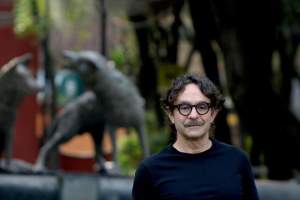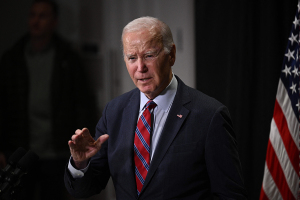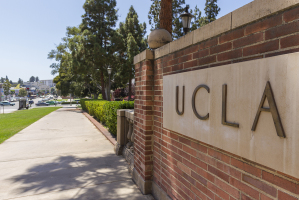German Christmas Markets Sparkle in Season
NUREMBERG, Germany – This time of year, the Christmas spirit descends on Germany's cities and towns in the form of wooden stalls laden with pretzels, toys and baked goods of all shapes and sizes.
More than 130 places in Germany host Christmas markets, each one emphasizing regional specialties and flair. The celebrations have developed into an art form, with handcrafted wooden ornaments, elaborate nativity displays and delectable treats that would leave Santa and his reindeer turning up their noses at mere cookies and milk.
The markets are a major tourist attraction, drawing visitors from around the world. But the markets also draw on centuries of Christmas traditions in this country where the Protestant Reformation took root and where the current pope was born, with some customs dating back to the Middle Ages.
Dresden and Nuremberg compete for the oldest and most famous Christmas markets.
Dresden, in Germany's east, boasts the Striezelmarkt, the oldest documented Christmas market in the country, dating to 1434. It is the home of the largest "Christmas pyramid" — a 45-foot-high wood structure lit with candles that spin the tiers of the decorated pyramid.
The tradition for Christmas wood carving comes from the Erzgebirge, or "Ore mountains," an old mining region south of the city that borders the Czech Republic. Nutcrackers and "smoking men" incense holders were originally created here.
The Stollen Festival is another highlight of the market, with the largest loaf of Christstollen — a buttery, spiced loaf weighing between 3 and 4 tons — cut here and served to visitors on Dec. 8.
In Nuremberg in Bavaria, the city's Christkindlmarkt is perhaps the most famous of all the markets, counting some 2 million visitors from Japan, the U.S., China, all over Europe and elsewhere around the world every year.
They come for the Lebkuchen, a spicy gingerbread baked here since 1395 and "3 in a Weggla," which are tiny Nuremberg wursts, served three little sausages abreast in a bun with spicy mustard. The Christkind, an angelic or fairy-like character, is the symbol of the market, and a woman with golden hair and a crown opens the market each year with her Christmas proclamation and hears the Christmas gift wishes of the children.
In Frankfurt am Main's historical center, the Dom Roemer transforms from its post-World War II reconstruction of history into a wonderland of carousel music, bundled groups of people laughing around cauldrons of hot spiced wine called Gluehwein, and thick clusters of gingerbread hearts laden with hardened frosting.
In Aachen, bakeries offer their famous Aachener Printen gingerbread and marzipan bread. In Berlin, the 17th-century Charlottenburger Palace is brilliantly illuminated behind the market, and the Jewish Museum hosts a combined Hanukkah-Christmas market with kosher delicacies.
The popularity of the Christmas markets has spread around the world, inspiring copies in Britain, the United States and elsewhere.
The German American Chamber of Commerce was inspired to create a market in Chicago after Nuremberg's Christkindlmarkt, and even has the Nuremberg's former Christkind, Eva Sattler, an original Nuremberger, opening the market with a traditional proclamation.
Marco Geroni, 31, a lawyer from Italy on holiday in Berlin with his family, said they had already visited several Christmas markets.
"I think the markets are very funny," he said. "My mother is going crazy buying things for under the tree."




























